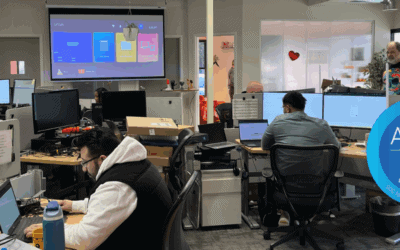I’m sure you’ve heard the phrase “The Great Resignation” by now. It’s the phenomenon driving droves of employees out of the workforce. Perhaps you’re feeling its effects because you’ve lost great people in your organization or maybe because you’re having trouble finding good ones to fuel your business’ growth. Either way, you know not having the right people can hurt your core business and sabotage a strategic plan.
But, have you considered what threats the resignation trend could be exposing your business to from an IT and cybersecurity perspective? If you have not, you should. It has significant effects on your IT security and support, whether you use in-house IT or an outsourced MSP.
Back in 2008, when the economy was going nutty from the “Great Recession,” it became apparent to companies that an inadequately managed IT function gets exponentially worse as the business environment sours. During that recession, prospective clients told me horror story after horror story about their deteriorating IT as people were let go or left for more secure jobs elsewhere. Their IT support went from good to mediocre to bad to failing miserably. With the “Great Resignation,” it’s deja vu all over again!
A poorly run IT function cannot absorb much disruption because it lacks resiliency. If your IT lacks resiliency and is ill-prepared when IT is shocked by job losses, role expansions/modifications, or onboarding learning curves, your business–and your customers–are going to feel it.
So what are the threats the Great Resignation is creating for IT and your business?
Human threats
- Manpower shortages and responsibility holes – Did the tech monitoring your security leave? Who is paying attention to the threats now?
- Long hiring cycles – It can take you a VERY long time to hire a replacement. We have a client that has been looking to hire an IT person for over 6 months. Know and monitor who is managing the responsibilities of the vacant position.
- Termination processes – Are you handling terminations effectively? If your IT does not have a good process in place, you will feel the vulnerabilities holes created by an employee’s departure (software access, password compromises, disgruntled employee actions, etc.).
- Outsourced support – If you are using 3rd-party IT, ask your vendor how the resignation phenomenon is affecting their people strategy, engagement, and performance. The effects of their business will cascade to your business.
Technology threats
- Desktop applications – Keeping your system up to date and secure is critical whether is a crisis or not. Have a process and reporting in place to confirm this important job is being effectively completed.
- Cloud threats – Who has access and should they? You need to have a process in place to review this and monitor activity.
- Network threats – Remote work is becoming the norm to attract and retain talent. Make sure your home users’ and office’s network technology is up to date and secure.
- Backup data – Backed up your data to the cloud and secure it with encryption.
- Remote work – Remote workers are not on the radar like office employees. Ensure that you grant or remove system access as appropriate and layer on the appropriate security needed.
- Ransomware – It is real and hackers are out to get everyone (many hackers have no-cost auto-bot hacking software working for them). The threat never ends. Software can help relieve some of the people gaps. Protect and defend yourself.
What can you proactively do to build a more resilient in-house IT during the “Great Recession”?
- Keep the employees you have – Treat your employees well and create a culture they will not want to leave.
- Lock down your Termination protocols – Ensure that your IT team has a robust termination process to handle all of the activity for the company.
- Establish strong Onboarding protocols – Hire the right people and get them operational quickly and efficiently.
- Documentation – Document everything so that if employees do leave, you do not have to reinvent the wheel each time.
- Establish “Zero Trust.” – It is time to think in terms of Zero Trust. The term means that users begin with absolutely no access to anything and, then, are only given rights to what they absolutely need. The old approach of “just give the new user the same rights the old employee had” is over.
- Establish good HR practices – When an employee terminates, make sure that HR has a good process in place to work with IT to collect equipment, keys, etc. Have a solid process in place for new hires as well, so when someone new starts onboarding is smooth and you look good.
If you are using a third-party IT support
- Treat them great like the rest of your internal team.
- If they haven’t granted you access to their documentation platform, ask for access. You should know all of your IT documentation so you can be comfortable that if you ever part ways you are not starting over from scratch.
- Ask about their team’s tenure and how they onboard new employees. Lots of employee turnover and a lack of onboarding process is never a good sign.
- Ask them how the great resignation is affecting them and how they are addressing it. You may be surprised by their answers.
- Do they have a solid process in place for your new hires and terminations? A poor process can pass with little change in activity, but collapses with an onslaught of activity.
Conclusion
The “Great Resignation” can have obvious impacts on your business. But, the unseen cascading effect on areas like IT can be even more devastating. Cybersecurity, employee experience, productivity, enterprise vulnerabilities, and data threats can bring a company to its knees. The moral of the story is to ask questions and pressure test your IT team and processes. By building IT resilience into your organization now, you can absorb the effects of these crazy workforce dynamics and position your company for success.






